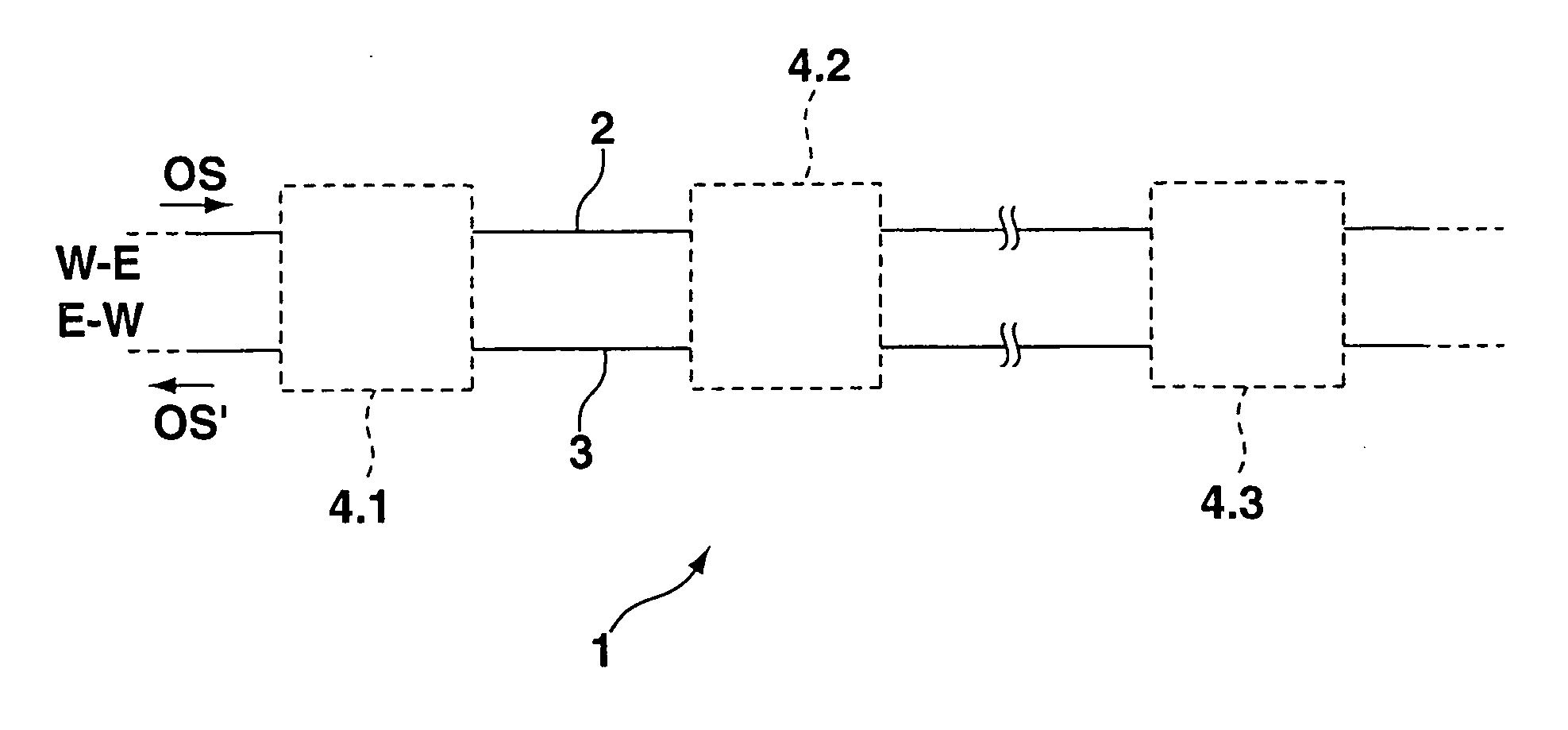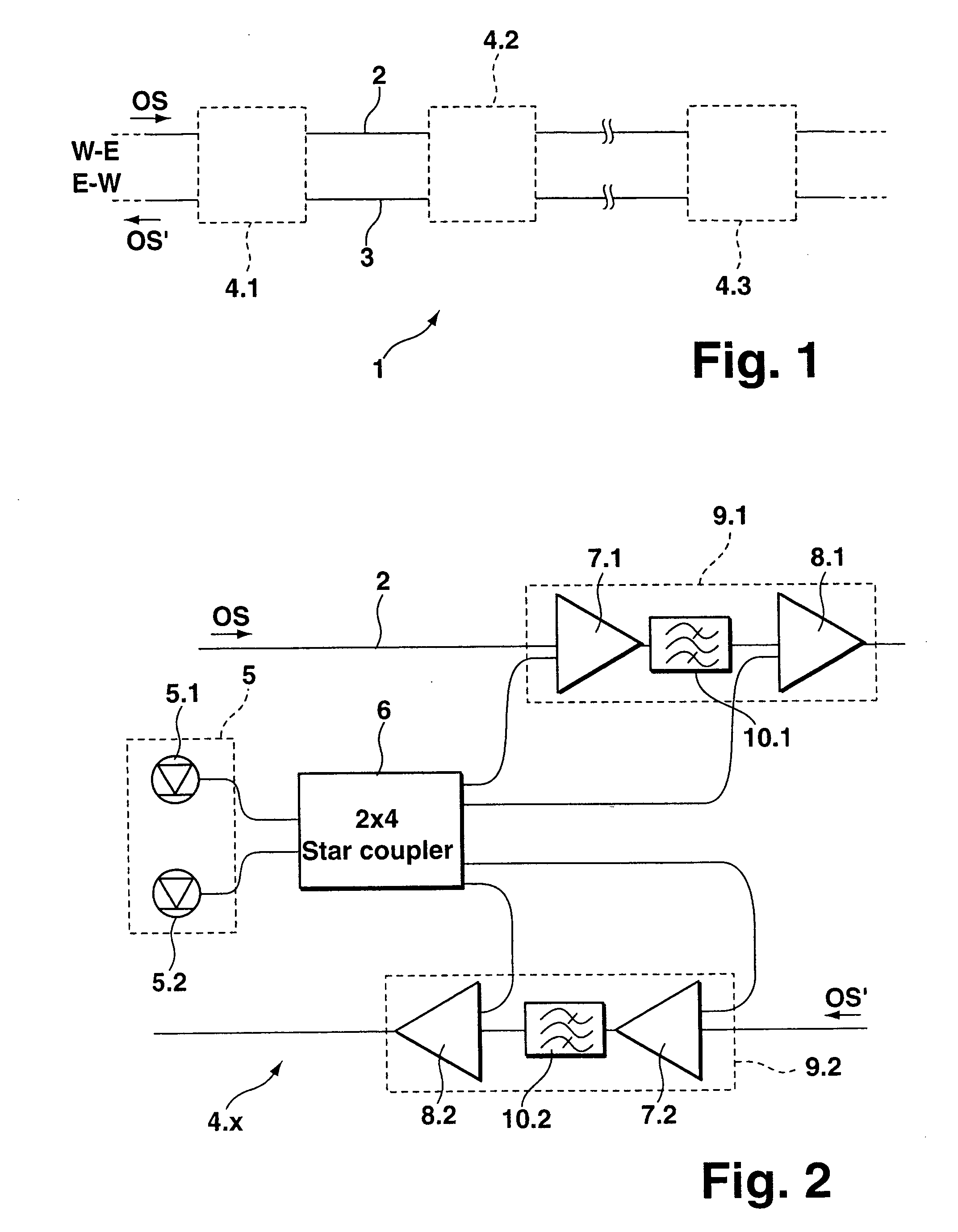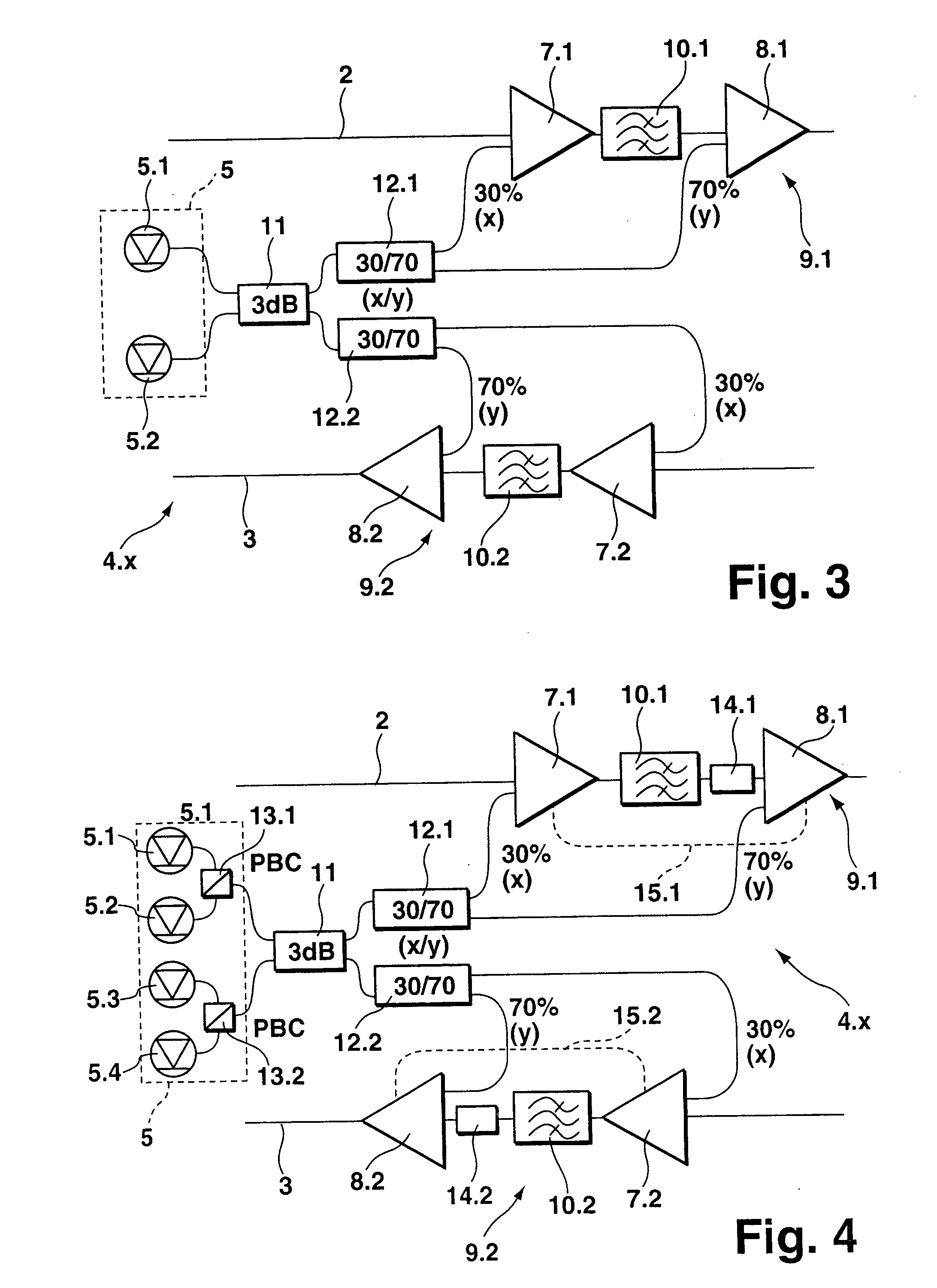Optical transmission system and optical filter assembly for submarine applications
a technology of optical transmission system and optical filter assembly, which is applied in the direction of fibre transmission, electrical apparatus, laser details, etc., can solve the problems of high pump power required to reach higher output power levels, limited power levels of optical amplifier assemblies, and induced insertion loss due to prior art optical amplifier assemblies. , to achieve the effect of high output power
- Summary
- Abstract
- Description
- Claims
- Application Information
AI Technical Summary
Benefits of technology
Problems solved by technology
Method used
Image
Examples
first embodiment
[0030]FIG. 2 shows a block diagram of the optical amplifier assembly in accordance with the present invention. In order to comply with the above-described illustration in FIG. 1, the optical amplifier assembly of FIG. 2 has been assigned reference numeral 4.x, wherein reference numeral 4.x replaces reference numerals 4.1-4.3 of FIG. 1 in a generic way.
[0031] The optical amplifier assembly 4.x of FIG. 2 comprises two pump light sources 5.1, 5.2, e.g. laser diodes, which effectively form a common pump source 5 as indicated by a dashed box in FIG. 2. The pump light sources 5.1, 5.2 are operably connected with a star coupler 6, which couples the common pump source 5, i.e. the individual pump light sources 5.1, 5.2 to respective first 7.1, 7.2 and second fibre amplifiers 8.1, 8.2 arranged on the first optical fibre 2 and on the second optical fibre 3, respectively, for amplifying the optical signals OS, OS' propagated thereon. As depicted in FIG. 2, the first fibre amplifier 7.1 and the ...
second embodiment
[0034]FIG. 3 shows a block diagram of the optical amplifier assembly 4.x in accordance with the present invention. The embodiment of FIG. 3 differs from the above-described embodiment of FIG. 2 in that a ratio of pump powers injected into the first and second fibre amplifiers of the first and second double stage fibre amplifiers are not equal. In particular, the pump power injected into the second fibre amplifiers 8.1, 8.2, i.e. the respective second stages of the double stage fibre amplifiers 9.1, 9.2, can be increased at the expense of the pump power injected into the respective first stages 7.1, 7.2. This solution is of particular interest when very large gains (>20 dB) are considered.
[0035] In the embodiment of FIG. 3 the optical amplifier assembly 4.x comprises two pump light sources 5.1, 5.2 forming a common pump source 5, which are coupled to a 3 dB-coupler, i.e. a 50:50 splitter 11. The 3 dB-coupler 11 evenly distributes the pump power of the common pump source 5 between two...
PUM
 Login to View More
Login to View More Abstract
Description
Claims
Application Information
 Login to View More
Login to View More - R&D
- Intellectual Property
- Life Sciences
- Materials
- Tech Scout
- Unparalleled Data Quality
- Higher Quality Content
- 60% Fewer Hallucinations
Browse by: Latest US Patents, China's latest patents, Technical Efficacy Thesaurus, Application Domain, Technology Topic, Popular Technical Reports.
© 2025 PatSnap. All rights reserved.Legal|Privacy policy|Modern Slavery Act Transparency Statement|Sitemap|About US| Contact US: help@patsnap.com



